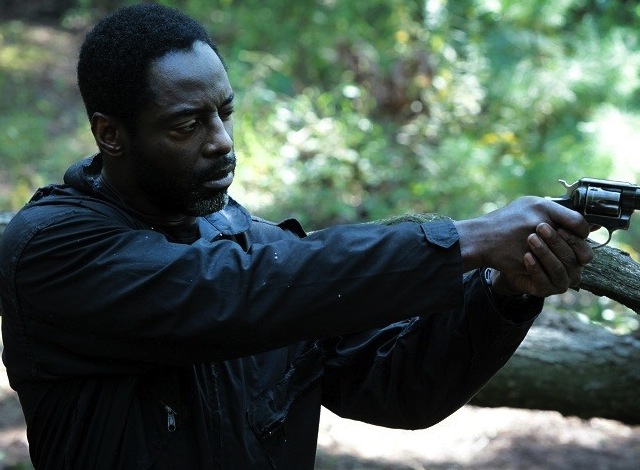Film Review: “Blue Caprice” — A Scary Evocation of Killing Field Senselessness
Director-writer Alexandre Moors, a Parisian living in New York City, builds a credible narrative story of the killer team in the months before their death spree.
Blue Caprice, at the Brattle Theater, Cambridge, MA, through October 3.
By Gerald Peary
Random murders by the heavily armed are the American way, and you can’t find a more picture-perfect scenario of killing field senselessness than the 2002 Beltway murders in the Washington DC area. They are clinically reproduced in the scary, effective independent feature Blue Caprice, where people are shot dead from a gun protruding from a hole in a car trunk. The expert shooter is a teenage boy, Lee Boyd Malio (Toquan Richmond), considered a “natural” with weaponry. He’s driven into various shopping centers and gas stations by John Allen Muhammed (Isaiah Washington), a fortyish war veteran, who picks out the victims for young Lee to assassinate.
Can their serial killing of 10 people be explained? Director-writer Alexandre Moors, a Parisian living in New York City, builds a credible narrative story of the killer team in the months before their death spree. It all begins in Antigua, where Lee is abandoned by his mother. Lost and unformed, barely verbal, he’s taken in by a snappy-talking African-American man, Muhammed. He brings Lee back with him to the USA, to Tacoma, Washington. A charitable act? Muhammed needs a worshipful sounding board. He is plagued by anger issues, and obsesses about his wife leaving with their children, and getting a restraining order. He talks on about evil in the world, and how people are screwed over, the basic agenda of a paranoid. Lee listens and listens, and soaks it up. As his own flock are lost to him, Muhammed anoints Lee as his son. And Lee calls him “dad.”
Their relationship gets weird. Muhammed demands that Lee tell his new dad he loves him. When Lee shoplifts a veggie burger, Muhammed punishes him by putting him in handcuffs and leaving him tied to a tree in the forest. Muhammed bullies him, wrestles roughly with him, they run through the woods in synch, as one body, one mind. And they meet Muhammed’s old army buddy, Lee (Tim Blake Nelson), and he introduces the boy to guns.
The first 65 minutes of the film are deliberate, undramatic and low-key, a prelude for the horror show over three weeks in the East. Filmmaker Moors is an experienced director of rock videos and commercials, and he wisely holds the smart, fast cutting for the climactic scenes, the death trip of an auto tooling about on the highway seeking arbitrary victims, then bloodied bodies lying inert on the pavement. Finally, the triumphant Muhammed explodes to Lee in a torrent of nihilist philosophy: “When they think it’s women, we kill a kid. When they think it’s kids, we kill a pregnant woman. We blow up a busload of cops. Total chaos.”
Lee seems to have no objection to Muhammed’s plan, and does what he can to carry it out until (curiously, off screen) the duo are captured and imprisoned.
The temptation in such a film (you know what Hollywood would do) is to see the black boy as a total victim of the evil man who has brought him to America as a sort of slave. But Blue Caprice never sentimentalizes Lee for a second. He’s a moral blank and, when in jail, unrepentant and defiant. He wants only one thing: “Where’s my father?”
Gerald Peary is a professor at Suffolk University, Boston, curator of the Boston University Cinematheque, and the general editor of the “Conversations with Filmmakers” series from the University Press of Mississippi. A critic for the late Boston Phoenix, he is the author of 9 books on cinema, writer-director of the documentary For the Love of Movies: the Story of American Film Criticism, and a featured actor in the 2013 independent narrative Computer Chess.


